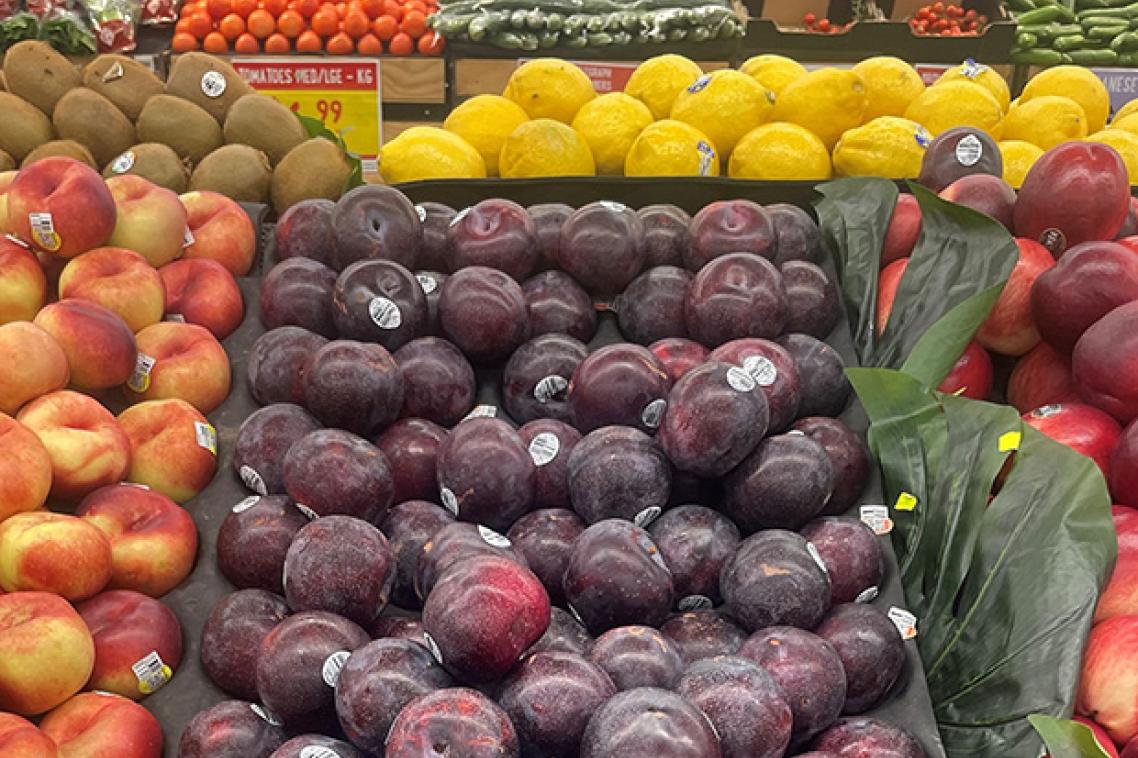Potent brain potential in Queen Garnet plum

A high-antioxidant fruit created in Queensland could have the potential to boost human brain activity and scientists at The University of Queensland are keen to carry out further research.
Professor Yasmina Sultanbawa at UQ’s Queensland Alliance of Agriculture and Food Innovation said a key piece of knowledge about the Queen Garnet plum was missing.
“While a lot of research has been done, there is a gap in the literature for this amazing fruit,” Professor Sultanbawa said.
“We know that this plum variety is rich in anthocyanins – a flavonoid or plant secondary metabolite with potent antioxidant properties.
“It’s important now to go into the next phase of mimicking the human digestion system to see exactly what happens when it’s absorbed and how it connects to the gut and brain nexus.”
The Queen Garnet plum was created by a Queensland Government breeding program and differs from other plums in the rich red colour of its flesh.
It’s known as the antioxidant plum.
QAAFI Senior Research Fellow Dr Michael Netzel agrees it is time to build on the early studies that revealed the plum’s promise.
“We’ve studied the composition and analysed the anthocyanin profiles of this plum variety, and in small pilot trials studied their stability and metabolism in the human digestive tract,” Dr Netzel said.
“From a scientific perspective, it’s a great product – a juicy, palatable, high quality, premium fruit that stores well without deterioration of the antioxidant anthocyanins.
“There have been some promising initial findings on human cognition and other health benefits, so a bigger study is warranted.”
Professor Sultanbawa said work was also needed to study colon microbiota and its role in converting anthocyanins to smaller compounds that are known to have benefits for cognitive function.
“If you can connect the compounds contained in the fruit to things like dementia, where some of the antioxidant properties can minimize the damage of DNA, that would be a very interesting piece of work,” she said.
“It must be a multi-disciplinary team involving everyone from neuroscientists, to nutritionists, food scientists and even social and policy scientists.
“People are living longer and if we can improve quality of life through diversity of diet by adding something like the Queen Garnet plum, it would be very exciting.
“That’s why more research on this plum is so important.”
The Naturally Nutritious project was funded by Hort Innovation and the Department of Primary Industries. The Queensland Alliance for Agriculture and Food Innovation is a research institute at The University of Queensland established with and supported by the Department of Primary Industries.
Media assets
Images available via Dropbox.
Media contact
QAAFI Communications
Natalie MacGregor
n.macgregor@uq.edu.au
+409 135 651
Related articles

Nature versus nurture question addressed in landmark study

Finding efficiencies in creating jet fuel from plant waste
Media contact
UQ Communications
communications@uq.edu.au
+61 429 056 139
